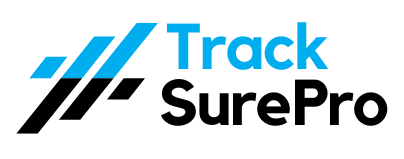Mitigating Risks in Construction Projects: Effective Contractor Risk Management Strategies

Mitigating Risks in Construction Projects: Effective Contractor Risk Management Strategies
Introduction:
Construction projects are inherently complex and involve various risks that can impact timelines, budgets, and overall project success. Effective contractor risk management strategies are essential for identifying, assessing, and mitigating these risks to minimize potential disruptions and losses. In this guide, we will explore key considerations and strategies for mitigating risks in construction projects, emphasizing the importance of proactive planning, communication, and the role of TrackSurePro as a solution.
Understanding Risks in Construction Projects:
- Project-specific Risks:
- Construction projects face a multitude of risks, including safety hazards, design errors, material shortages, weather-related delays, regulatory compliance issues, subcontractor failures, and unforeseen site conditions, among others.
- Financial Risks:
- Financial risks in construction projects include cost overruns, budget constraints, payment disputes, inflation, currency fluctuations, and fluctuations in material or labor costs, which can impact project profitability and viability.
- Schedule Risks:
- Schedule risks encompass delays in project timelines due to unforeseen circumstances, such as weather disruptions, permit delays, labor shortages, supply chain disruptions, or changes in project scope, leading to potential penalties, liquidated damages, or loss of revenue.
- Liability Risks:
- Liability risks involve potential claims or lawsuits arising from property damage, bodily injury, or negligence, which can result in legal expenses, insurance claims, reputational damage, and financial liabilities for contractors and project stakeholders.
Effective Contractor Risk Management Strategies:
- Risk Identification:
- Conduct thorough risk assessments to identify potential risks and vulnerabilities specific to each construction project, considering factors such as project scope, location, stakeholders, and external influences.
- Risk Assessment:
- Evaluate the likelihood and potential impact of identified risks using qualitative and quantitative methods, such as risk matrices, probability-impact assessments, and sensitivity analyses, to prioritize risks and allocate resources effectively.
- Risk Mitigation Planning:
- Develop risk mitigation plans outlining proactive measures to reduce, transfer, or avoid identified risks, including contingency plans, risk transfer agreements, insurance coverage, safety protocols, and contractual risk allocation strategies.
- Communication and Collaboration:
- Foster open communication and collaboration among project stakeholders, including contractors, subcontractors, designers, suppliers, and clients, to share information, coordinate efforts, and address potential risks collaboratively.
Using TrackSurePro for Contractor Risk Management:
- Risk Register Management:
- TrackSurePro provides a centralized platform for managing risk registers, allowing contractors to document, track, and monitor identified risks throughout the project lifecycle, ensuring proactive risk management and mitigation.
- Automated Risk Assessment:
- TrackSurePro automates risk assessment processes, leveraging predefined risk criteria, historical data, and predictive analytics to evaluate the likelihood and impact of identified risks, facilitating informed decision-making and resource allocation.
- Risk Mitigation Tracking:
- TrackSurePro enables contractors to track and monitor risk mitigation measures, including action plans, control measures, and contingency plans, ensuring timely implementation and effectiveness of risk mitigation strategies.
- Real-time Reporting and Analytics:
- TrackSurePro offers real-time reporting and analytics capabilities, allowing contractors to generate customized reports on risk exposure, mitigation efforts, and residual risks, facilitating transparency, accountability, and continuous improvement in risk management practices.
Conclusion:
In conclusion, effective contractor risk management is essential for mitigating risks, ensuring project success, and protecting the interests of contractors and project stakeholders in the construction industry. By adopting proactive risk management strategies, such as risk identification, assessment, mitigation planning, and communication, contractors can anticipate potential challenges, minimize disruptions, and enhance project outcomes.
Furthermore, leveraging advanced solutions like TrackSurePro can streamline contractor risk management processes by offering centralized risk register management, automated risk assessment, mitigation tracking, and real-time reporting capabilities. With TrackSurePro’s support, contractors can proactively identify, assess, and mitigate risks, minimize potential losses, and deliver successful construction projects while safeguarding their businesses and reputations.

